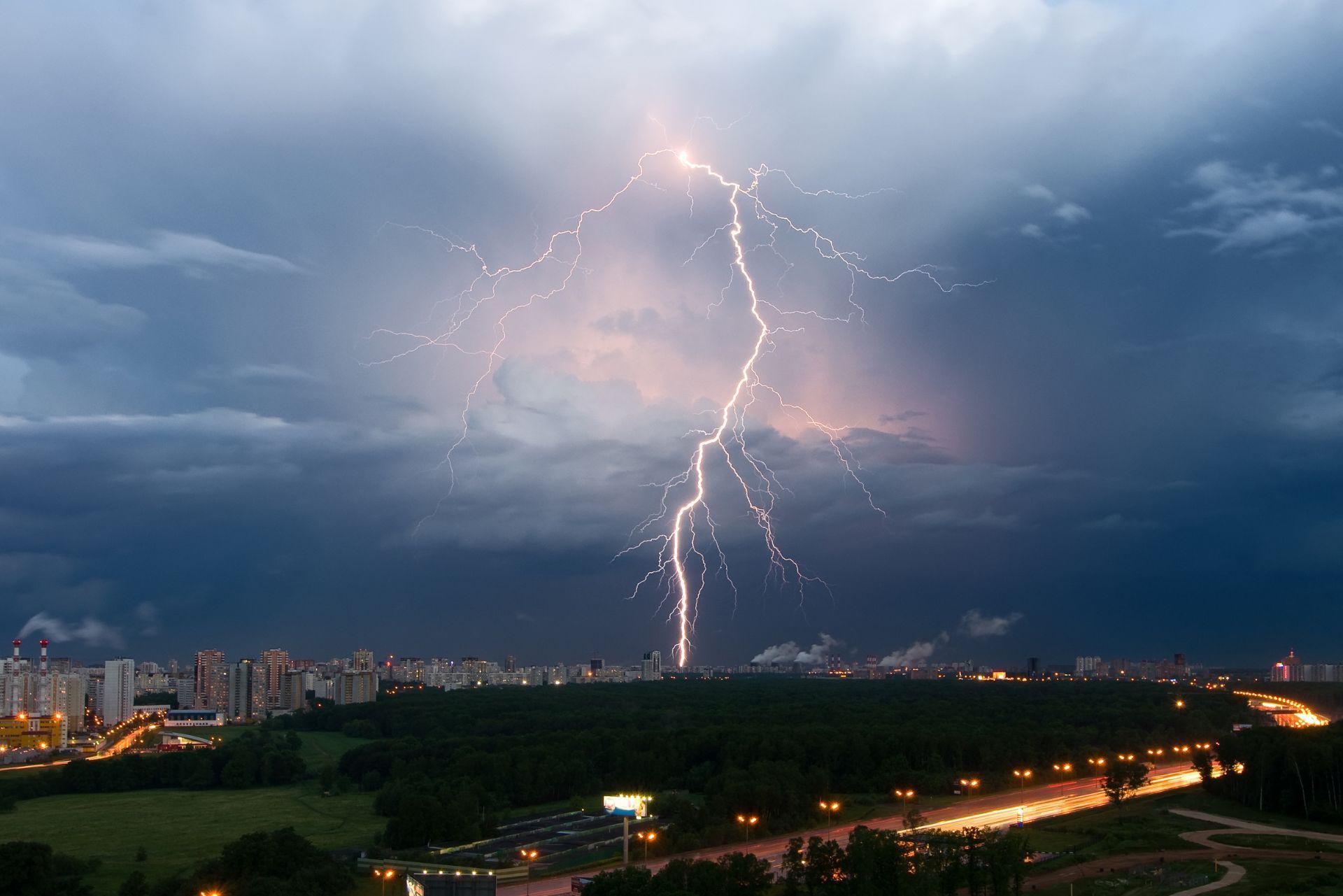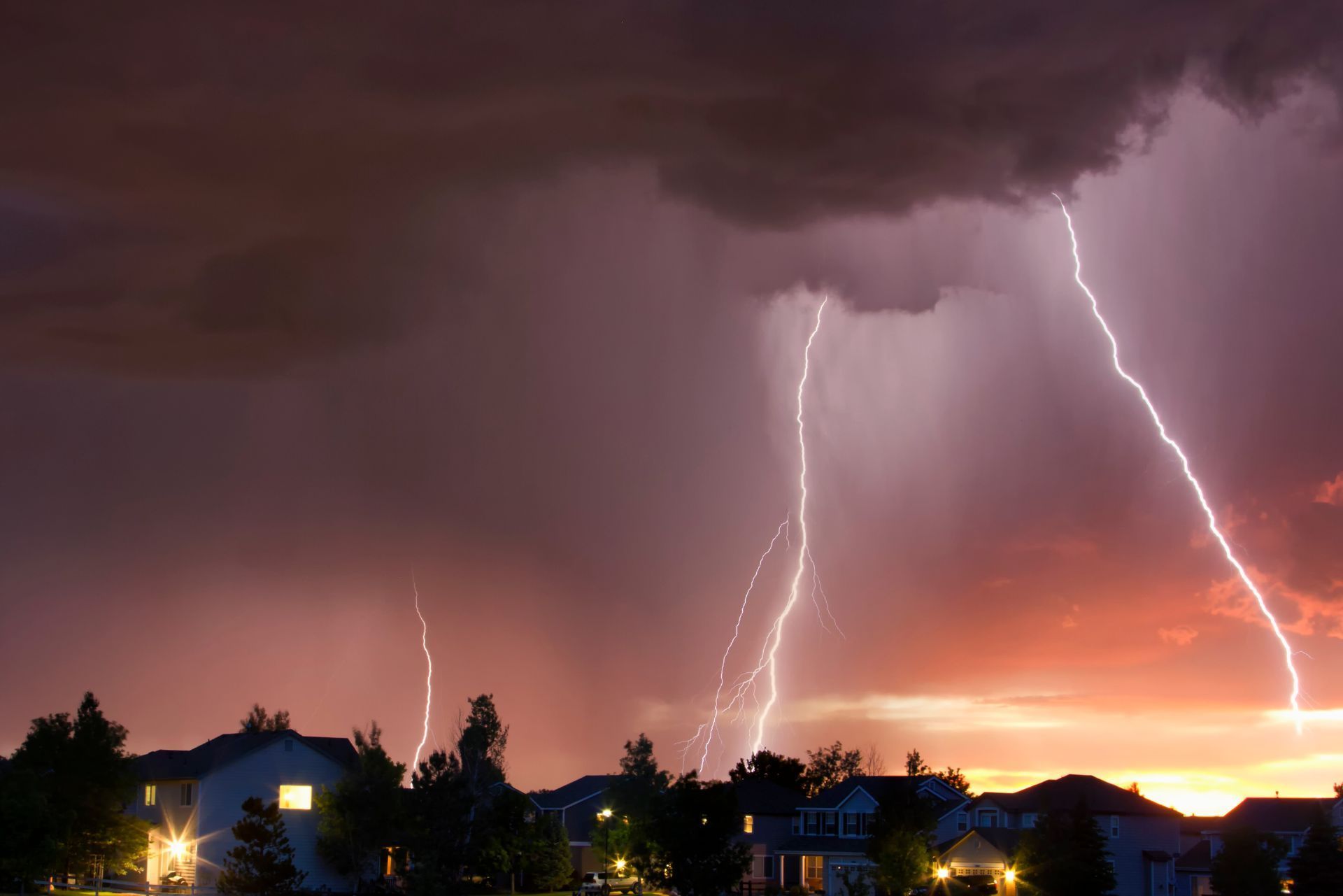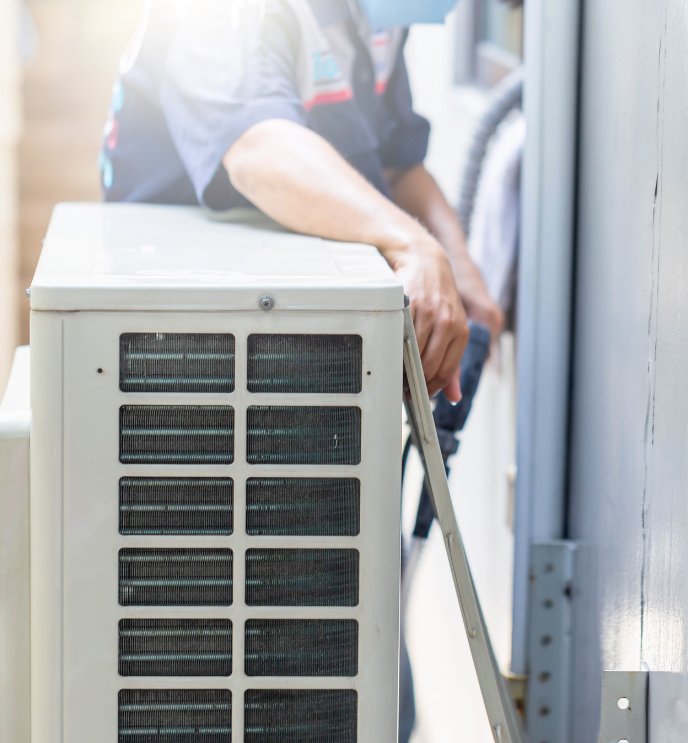Lightning Protection System Installer Insurance
See How We're Different
or call us: 888-988-2347
Types of Contractors We Serve
Jonathan Behr
Owner of Contractor Insurance Pros by Behr Insurance Services
Index
The Growing Demand for Lightning Protection and Its Implications
Understanding the Risks Faced by Lightning Protection System Installers
Types of Insurance Coverage Essential for Installers
Why Installer Insurance Matters More Than Ever
Choosing the Right Insurance Provider and Policy
Conclusion: Protecting Your Business and Clients in a High-Risk Environment
Contact Us
Phone
Location
Simi Valley, CA 93065
The Woodlands, TX 77382
Katy, TX 77494
Lightning strikes pose a significant risk to properties across the United States, with damages often running into billions of dollars annually. For professionals installing lightning protection systems, understanding the intricacies of insurance coverage is essential—not only to safeguard their business but also to maintain trust with clients. This comprehensive guide delves into everything installers need to know about insurance, from the risks involved to the types of coverage available and why these policies are crucial in today’s climate.
Lightning-related homeowners insurance claims in the U.S. surged to $1.27 billion in 2023, marking a 30% increase from the previous year. This sharp rise underscores the growing importance of lightning protection and the corresponding need for installers to be adequately insured. For more detailed insights into these trends, the
Insurance Information Institute (Triple-I) provides an excellent resource.
The Growing Demand for Lightning Protection and Its Implications
With over 20 million cloud-to-ground lightning strikes reported annually in the U.S., the risk of damage to homes and commercial buildings is considerable. Direct property damage from these strikes approaches $1 billion each year, emphasizing why lightning protection systems are becoming a standard safety feature in many regions. The increasing frequency and intensity of thunderstorms, attributed in part to climate change, further exacerbate this risk. As weather patterns shift, areas previously considered safe from lightning strikes may now find themselves vulnerable, prompting homeowners and businesses alike to reassess their lightning protection strategies.
The global market for lightning protection systems has experienced a 7.8% year-on-year increase in demand in 2024, largely driven by stricter building safety regulations. This growth signals expanding opportunities for installers but also introduces heightened responsibilities and liabilities. Installers must ensure their work complies with evolving standards to protect clients effectively and avoid costly claims. Moreover, advancements in technology have led to the development of more sophisticated lightning protection systems that not only safeguard structures but also integrate seamlessly with smart building technologies. These innovations allow for real-time monitoring and alerts, enhancing safety measures and providing peace of mind to property owners.
Given this landscape, insurance coverage tailored for lightning protection system installers is not just a precaution but a necessity. It helps mitigate risks associated with installation errors, property damage, and potential injuries during the installation process. As the industry continues to grow, it is crucial for installers to stay informed about the latest insurance products that cater specifically to their needs. This includes understanding the nuances of liability coverage, as well as the importance of having comprehensive policies that encompass both equipment and personnel. Furthermore, educational programs and certifications for installers are becoming increasingly important, ensuring that they are well-equipped to handle the complexities of modern lightning protection systems and the associated risks.

Understanding the Risks Faced by Lightning Protection System Installers
Installing lightning protection systems involves working at heights, handling conductive materials, and often navigating complex electrical components. These factors contribute to a range of risks, including:
- Personal injury to installers or third parties
- Damage to client property during installation
- Faulty installation leading to system failure and subsequent damage
- Legal claims arising from negligence or breach of contract
Lightning strikes themselves can occur at an astonishing rate—up to 100 times per second globally—highlighting the urgency for reliable protection systems. As Tim Harger, Executive Director of the Lightning Protection Institute, notes, "Mitigating the risks of lightning strikes starts with a thorough assessment before a storm." Installers play a critical role in this mitigation, and their insurance must reflect the high stakes involved.
Moreover, the physical environment in which installers operate can present unique challenges. For instance, working on rooftops or tall structures not only increases the risk of falls but also exposes workers to unpredictable weather conditions. Wind, rain, and even sudden temperature changes can affect both the safety of the installers and the integrity of the materials being used. Proper training and adherence to safety protocols are essential to minimize these risks. Installers must be equipped with personal protective equipment (PPE), such as harnesses and helmets, and should be well-versed in emergency response procedures in case of an accident.
In addition to physical hazards, there are also psychological pressures that installers may face. The responsibility of ensuring that a lightning protection system functions correctly can weigh heavily on their shoulders, especially when working on high-profile projects or in densely populated areas. The potential for significant financial loss due to an installation error can lead to stress and anxiety. Therefore, fostering a culture of safety and open communication within installation teams is crucial. Regular safety meetings and mental health support can help mitigate these pressures, ensuring that installers are not only physically safe but also mentally prepared to tackle the challenges of their demanding job.
Types of Insurance Coverage Essential for Installers
Several insurance policies are particularly relevant for lightning protection system installers. Understanding each type helps ensure comprehensive protection:
General Liability Insurance
This coverage protects installers against third-party claims for bodily injury or property damage that might occur during installation. For example, if an installer accidentally damages a client’s roof or causes injury to a bystander, general liability insurance covers legal fees and settlements. In addition to covering direct damages, this insurance can also provide coverage for advertising injuries, such as claims of slander or copyright infringement, which can be particularly relevant for businesses that engage in marketing their services.
Professional Liability Insurance (Errors & Omissions)
Also known as E&O insurance, this policy covers claims arising from mistakes or negligence in the installation process. If a system fails to function correctly due to improper installation, leading to damage or injury, this insurance helps cover the resulting costs. This type of insurance is especially crucial as it can also protect against claims related to inadequate advice or services provided to clients, which is vital in a field where expertise and precision are paramount.
Workers’ Compensation Insurance
Given the physical risks involved in installation work, workers’ compensation insurance is vital. It covers medical expenses and lost wages if an installer is injured on the job, ensuring compliance with state regulations and protecting both employer and employee. Moreover, this insurance can provide rehabilitation services to help injured workers return to their jobs, which not only aids the individual but also helps maintain workforce stability and morale within the company.
Commercial Auto Insurance
Many installers use vehicles to transport equipment and personnel. Commercial auto insurance covers accidents involving these vehicles during business operations, protecting against liability and repair costs. This coverage is particularly important as it extends beyond personal auto insurance, addressing the unique risks associated with transporting heavy equipment and multiple team members. Additionally, it can include coverage for cargo, ensuring that valuable tools and materials are protected in the event of theft or damage while in transit.
Why Installer Insurance Matters More Than Ever
The financial impact of lightning strikes on homeowners is staggering. In 2023 alone, lightning-caused homeowners insurance claims totaled $1.27 billion, a significant increase from previous years. This trend reflects both the frequency and severity of lightning-related damages, as well as the increasing value of properties at risk.
Insurance agents like Dennis Hilton emphasize that "Lightning is one of the core perils that insurance policies are designed to protect against." For installers, this means being part of a critical line of defense. However, with such responsibility comes the need for robust insurance coverage to shield their business from potential lawsuits and claims.
Moreover, the Lightning Protection Institute’s 2018 analysis revealed that lightning strikes affected nearly 78,000 policyholders, resulting in close to $1 billion in claims. These figures highlight the ongoing demand for skilled installers and the importance of maintaining high standards backed by appropriate insurance.
As the climate continues to change, the frequency of severe weather events, including thunderstorms, is expected to rise. This shift not only increases the likelihood of lightning strikes but also amplifies the need for effective lightning protection systems. Installers must stay informed about the latest technologies and best practices in lightning protection to ensure they can provide the highest level of safety for their clients. This ongoing education is essential, as it directly correlates with the installer’s ability to mitigate risks and enhance their reputation in a competitive market.
Furthermore, the financial implications of inadequate coverage can be dire. An installer without proper insurance may face crippling costs if a project goes awry, leading to damages that exceed their financial capacity. This reality underscores the importance of not only having installer insurance but also understanding the specific coverage options available. Policies that cover liability, equipment, and even loss of income can provide a safety net that allows installers to focus on their craft without the constant worry of financial ruin. As the industry evolves, so too must the strategies that installers employ to protect themselves and their businesses from the unpredictable nature of their work.

Choosing the Right Insurance Provider and Policy
Selecting the right insurance provider involves evaluating coverage options, limits, and the provider’s experience with the lightning protection industry. Installers should seek insurers familiar with the unique risks of their trade and who offer tailored policies that address specific needs. This means looking for providers that not only understand the technical aspects of lightning protection but also appreciate the nuances of the installation process. A knowledgeable insurer can offer insights into potential liabilities and help craft a policy that aligns with the installer’s operational realities.
Quality control during installation is another critical factor. According to industry experts, ensuring proper installation practices reduces the likelihood of claims and enhances the effectiveness of lightning protection systems. Insurance providers often look favorably on businesses that demonstrate adherence to industry standards and invest in ongoing training. By prioritizing quality control, installers can build a reputation for reliability and safety, which can also lead to lower premiums and better coverage options. Additionally, maintaining detailed records of installations and inspections can serve as valuable documentation in the event of a claim, further solidifying the installer’s standing with their insurer.
Installers are encouraged to review their policies regularly, especially as regulations and market demands evolve. Staying informed about changes in building codes and safety requirements can help installers maintain compliance and avoid coverage gaps. This proactive approach not only safeguards the business but also enhances customer trust, as clients are more likely to choose installers who are knowledgeable about current standards. Furthermore, engaging with professional organizations and attending industry conferences can provide installers with critical updates and networking opportunities, enabling them to stay ahead in a competitive landscape. By fostering relationships with both insurers and industry peers, installers can create a robust support system that enhances their business resilience and adaptability.
Conclusion: Protecting Your Business and Clients in a High-Risk Environment
Lightning protection system installers operate in a high-risk environment where the stakes are exceptionally high. With lightning-caused claims rising sharply and stricter safety regulations driving market growth, having comprehensive insurance coverage is indispensable.
From general liability to professional liability and workers’ compensation, the right insurance policies not only protect installers financially but also bolster their credibility with clients. As the demand for lightning protection systems continues to increase, installers who prioritize insurance and quality control will be best positioned for long-term success.
For further information on lightning-related claims and industry trends, the Lightning Protection Institute offers valuable insights into the severity and frequency of lightning-related damages.
Areas we serve









